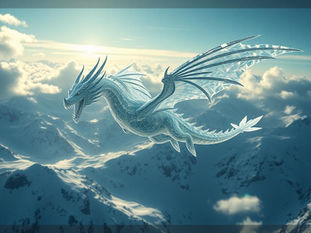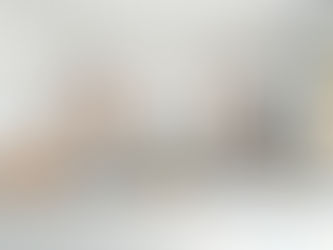
Your Simple Guide to Generating Interior Design Renders with Midjourney AI
May 5
4 min read
0
3
0

Midjourney has become a helpful tool for many creative professionals, including interior designers. It's especially good for getting ideas and exploring designs early in your process. With newer versions like Midjourney 5.2, the images look much more real, the details are better, and the lighting is improved.
Using AI like Midjourney can fit well into how you work. It helps spark inspiration and helps you try out different ideas quickly. Let's look at how you can get the best interior design images from Midjourney.
How to Write Effective Midjourney Prompts for Interiors
Getting the images you want from Midjourney starts with writing good prompts. Think about describing the scene by starting with the big picture and then adding more details. Go from the most important things to the less important ones.
Knowing some terms from design, photography, or art helps, but it's not required. Here are some ways to describe your scene:
Set the Scene
Many interior design images you see in magazines are in an editorial style. This is a good way to start your prompt for realistic looks. If you want a different look, you can try words for other styles like "pen and ink drawing" or "watercolor."
Choose the Camera Angle
Tell Midjourney how to frame the shot. Editorial images often use a wide angle lens (like 15mm to 24mm) to show a lot of the room. Starting with "wide angle" is often a good idea so you can see more of the space.
Describe the Design Style
Use words that capture the overall feel of the space. Examples include "modern," "vintage," "eclectic," or "neoclassical."
Name the Space
What kind of room is it? "Bedroom," "dining room," "loft," or "barn conversion"? Naming the room helps Midjourney include the right kind of furniture and items you'd expect to find there.
Add a Focal Point
Do you want to highlight something special? Mention it here, like "fireplace," "sofa," or "chandelier." You can also suggest a composition, such as "symmetrical" or "rule of thirds."
Mention Materials and Color
Be specific about materials. Pick 2 to 4 main materials to describe the dominant textures. For color, Midjourney doesn't use codes, so describe colors in detail. Words like "warm grey" or "battleship grey" work. Be careful your descriptive words don't add unwanted objects! You can also use general color ideas like "monochromatic" or "pastel colors." Sometimes, mentioning famous paint colors like "Farrow and Ball" can work nicely.
Include Details and Mood
Add details like a specific style or designer you admire. These can really influence the image. Think about the mood you want the space to have.
Light and View
Specify the lighting often seen at certain times of day, such as "morning," "dusk," or "golden hour." You can also add atmospheric effects like "foggy" or "hazy." If the view from the windows is important, describe it, like "coastal," "forest," "mountain," or "snowy."
Aspect Ratio
This sets the image size. Use `--ar` followed by the ratio. For a website banner, try `--ar 16:9`. For social media stories, use `--ar 9:16`. Experiment with ratios to see how they change the composition.
Writing good prompts is a skill that improves with practice. Keeping track of your prompt parts and results can help you learn what works best for your style. A tool that helps you organize and reuse these prompt ideas can save you lots of time. Consider using something like the Midjourney Automation Suite from TitanXT to manage your prompt library and streamline your workflow.
Refining Your Midjourney Images
Once you've created some images, you have ways to get variations or mix things up.
Use Vary Buttons
Below your generated images, you'll see buttons to create variations of a specific image. Click them to get four new options based on that result.
Blend Images
Use the `/blend` command to mix two images, either ones you've created or ones you upload. This is great when you like parts of different images.
Control Variation with Chaos
The `--c` command (chaos) adds more variation. Use `--c` followed by a number from 0 to 100. A higher number means the four images generated will be more different from each other and the original prompt.
Adjust Style Strength
The `--s` command (stylize) changes how artistic the images are. Higher numbers make images very artistic but might make them less connected to your exact prompt details.
Describe an Image
If you see an image you like online or in your library and want to know how to prompt something similar, use the `/describe` command. Upload the image, and Midjourney will suggest prompt text that describes it. This is a great way to find new words for your own prompts.
Give Words More Weight
Use a double colon (`::`) after a word or phrase to give it more importance in the prompt. You can also add a number after the double colon (like `::2` or `::5`) to increase its importance compared to other words. Higher numbers mean more weight.
Remove Unwanted Things
Use negative prompting with the `--no` command. Add `--no` followed by words for things you don't want in the image, like `--no red` to remove red color. Separate multiple items with commas.
Trying these techniques helps you move closer to your vision. Managing all these options and experiments can get complicated, especially when you're working on multiple projects. Tools built for this, like the Midjourney Automation Suite from TitanXT, can help you keep everything organized and make your workflow smoother. It's designed to handle the details so you can focus on the creative part.
Looking Ahead
Experimenting is key to using Midjourney well. While hand drawing and 3D modeling are still important, AI tools are changing how designers create images. Learning to use tools like Midjourney puts you at the forefront of these changes.
The future where AI helps create design elements directly in software is coming soon. Staying updated with tools like Midjourney helps you stay ahead.
Don't be afraid to try Midjourney. Have fun exploring its capabilities for your interior design projects.
Ready to take your Midjourney interior rendering to the next level? Explore how the Midjourney Automation Suite from TitanXT can automate tasks and manage your prompts for consistent, high-quality results.






